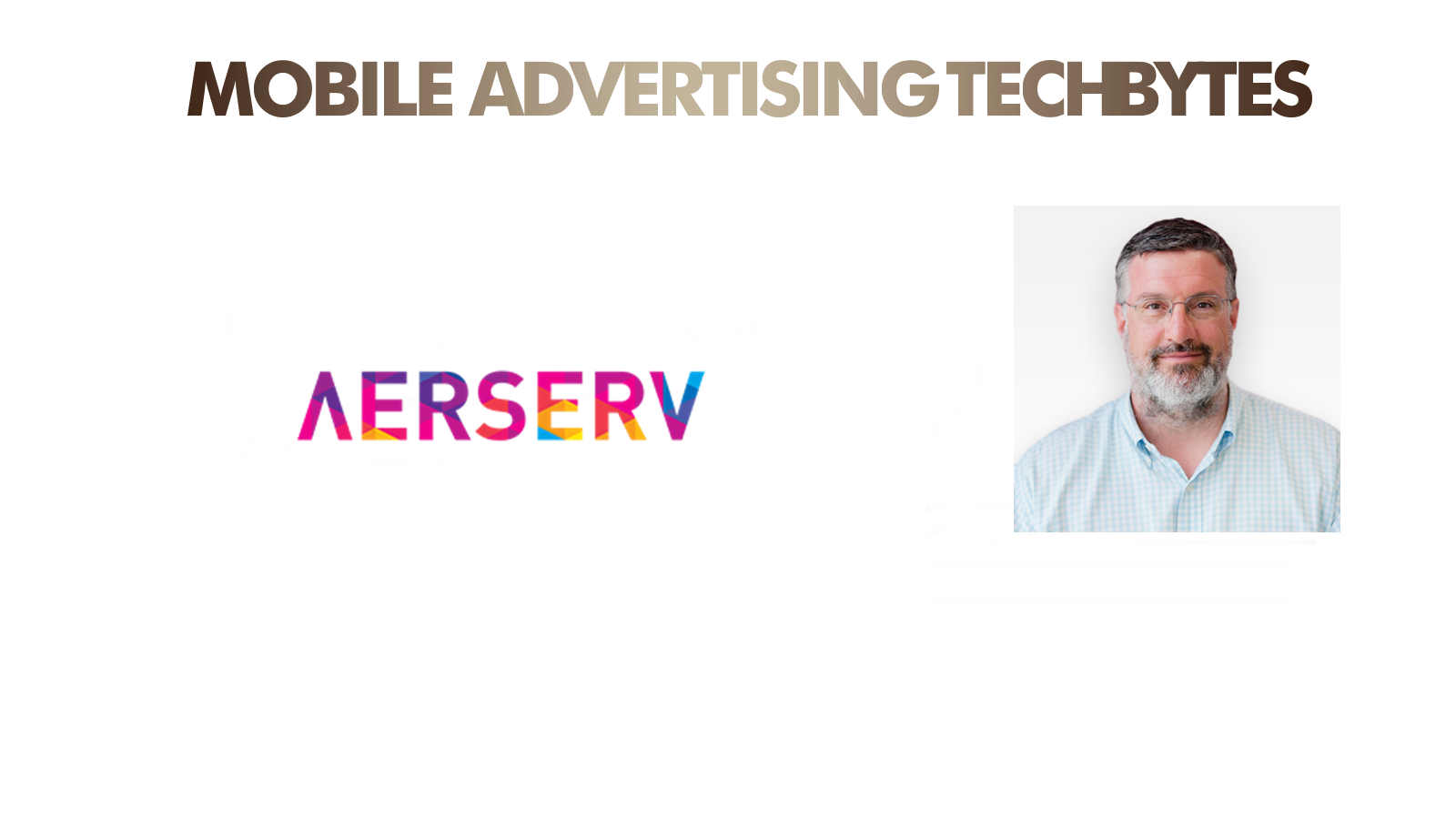
Last month, AerServ announced the launch of DataServ, a new data-as-a-service (DaaS) product that will connect CRM and offline data to mobile data and offer an additional revenue stream for mobile publishers. The leading ad management technology and SSP for mobile publishers and advertisers is offering DataServ to advertising, research, behavioral, analytics, and marketing companies to help them identify new and existing audiences across devices. We spoke to Josh Speyer, CEO at AerServ, to understand how DataServ customers would benefit from this development.
MTS: Tell us the vision behind launching DataServ for mobile advertising?
Josh Speyer: We felt that there were two things happening in the market. First, mobile publishers possess and have access to an incredible amount of data regarding their users, audience, and behaviors. Through our conversations with customers and publishers in the market, this data presents a largely untapped resource.
Second, a significant amount of advertising budget is tied up in cookies, with no way to bridge the gap into the cookie-less in-app world. Many buyers are addicted to cookies, and need help identifying their audience within apps, via device identifiers, to efficiently buy media in-app.
Many companies come from a traditional media (TV, newspaper, radio, print, offline, etc.) background and have lots of data about users, but do not have the ability to tie this data to online digital users. If they were able to tie a digital user to an email address or some other identifiable data point then they could port some of their media spend to digital to target these users.
AerServ has the ability to facilitate this user mapping from offline to digital with the assistance of our publishers. This benefits marketers by allowing them to target digital users and it benefits publishers by allowing them to be compensated for their first party data and create an additional revenue stream.
As a mobile-first company that is deeply embedded with our app partners, AerServ can surface and bring a level of understanding and value to the market that traditional data providers can’t provide.
Read More: AerServ Launches DataServ to Supplement Mobile Advertising Revenues
MTS: Who will be the customers for this data service product?
Josh Speyer: Mobile publishers, apps, and marketers. Mobile publishers have a lot of valuable first party data that marketers want to use. By sharing this data through more structured channels, they can receive proper compensation for their data and create a new revenue stream.
On the flip side, marketers have a lot of offline data that they want to connect to individual mobile digital users, but they are not able to make these connections. Connecting their offline data with AerServ (i.e. email addresses) enables us to make these connections for them so they can identify and target the same users on mobile devices. As this service continues to develop, we have plans to introduce novel and highly granular data offerings to the market, which we feel will drive even greater value for our publishers.
MTS: What are the key analytics offered by DataServ to generate revenue for mobile publishers?
Josh Speyer: The advertisers we’re working with are interested in a wide variety of audience data including email addresses, accurate location via geo targeting, demographic data, and others depending on the specific advertiser. Because our system is so flexible we can support any kind of data being passed and even encourage it. For now, we’re focused on creating the identity mappings and then developing expanding our data offerings to pair with it.
Recommended Read: Programmatic Tech Bytes with Andrew Gerhart, COO at AerServ
MTS: DataServ connects to CRM and offline data to mobile data. Which integrators and connectors are AerServ using to make this possible?
Josh Speyer: At the moment we aren’t directly connecting to CRM platforms, but we certainly see CRM integration as a longer-term opportunity. Publishers currently send us their data directly.
Publishers utilize all kinds of CRM data that they pass to us and then we connect the data to the Identifier For Advertising (IDFA). For example, address, email, phone, etc. are all common components of a CRM data set. Previously, this data had limited use in a programmatic mobile marketing environment. But once it is connected to IDFA or Android ID, the data has new value in this environment because it is now targetable, trackable, etc. This allows us to bridge valuable CRM datasets into the mobile world.
MTS: Which CRM platforms will DataServ connect to?
Josh Speyer: Over time we anticipate connecting to all major CRM platforms. We currently store the CRM data that publishers pass to us—from any CRM partner—in a secure and non-pii way.
Over time we look forward to deepening efficiencies for our publisher partners to further alleviate some of the manual, labor intensive work within their CRM systems.
Read Also: AerServ Introduces Ad Pods for Disruption-Free Multi-Display Video Ad Experience
MTS: Is DataServ an extension of programmatic ecosystem for mobile advertising?
Josh Speyer: Absolutely! DataServ helps enable and facilitate programmatic buying for buyers who need to connect data to device IDs and users in-app. One of the primary goals of DataServ is to bring additional programmatic ad spend to mobile apps. We view our work in data as supplying a better platform for intelligent buying through targeting specific behaviors, mapping users across multiple devices, or improving the algorithms that guide value and prediction in the programmatic environments.
MTS: How will DataServ help deliver relevant mobile content? How is mobile content different from website content?
Josh Speyer: By enabling marketers to leverage mobile publishers’ valuable audience data, DataServ is helping marketers develop more highly targeted and personalized content to consumers. For example, let’s say Tom is an avid runner, and loves Nike running shoes. Tom ordered Nike shoes online before using his Macbook, but not in the past three months. When Tom placed that order, he registered for an account using his email address and opted-in to their newsletter to hear about new Nike running shoes and gear.
Previously, if Nike wanted to reach Tom on a mobile device, the information they have on Tom (cookie from Macbook purchase, and his email address) is useless in-app. With DataServ, Nike can now identify Tom as he uses different mobile apps, and provide him specific content that they know he’ll be interested in. Additionally, Nike can find Tom in-app and deliver personalized ads with special offers or discounts for running gear.
At AerServ we focus on in-app inventory, which differs from mobile website content opportunities in a few ways. There are obvious differences between the environments in how they are programmed and the way they interact with the user. In terms of data, Apps have the capacity to continually collect data with a level of granularity in ways that mobile web cannot. Much of this is rooted in how an app lives on the device. Apps have permissions that browsers typically lack, they capture IDFA and Android ID while websites typically do not; and in general, the way a user interacts with app content allows a level of insight and understanding we would not be able to receive from web content.
MTS: What would be the key to deliver best experiences on mobile –audience data or device management data?
Josh Speyer: Audience data is critical to delivering the best experience on mobile, for both advertisers and publishers. Without data, advertisers would be employing a spray and pray approach with subpar results. With audience data, advertisers can identify and target their specific consumers, with a tailored message. A beautiful user experience is one that relies both on general audience data as well as an understanding of the way a user interacts, on different devices, so they have the most custom and well-tested content. It’s an experience that dynamically changes over time as new information and devices are brought into the user’s world. Many publishers inherently understand this, but unless you are the largest publisher in the world you most likely don’t have access to user data in a consistent or broad way. By partnering with AerServ you do.
MTS: How do you see the mobile advertising ecosystem change with the proliferation of AI and programmatic in the next 5 years?
Josh Speyer: With AI, we’ll undoubtedly see the volume of data around consumers and their interactions with brands (offline and online, across all devices) increase exponentially. As we see more data fed into the system, machine learning will only get more effective in delivering accurate predictive scenarios about consumers. This sets the stage for endless opportunities to surface new types of insights and strategies to engage individual consumers at a smarter, more personal level.
Mobile advertising partners who are able to help marketers empower this evolution; specifically, those focused on accelerating the machine learning process and creating more intelligent predictive models on emerging devices such as VR over the next several years, stand to gain significant competitive advantage.
Read More: AerServ and STRATA Join Forces to Bring Premium Video Ad Inventory for Mobile Businesses
MTS: Thanks for taking the time to chat with us Josh. We look forward to having at MarTech Series again for more insights.
Stay tuned for more on business insights on marketing automation, content marketing, video ad tech, programmatic and header-bidding technologies. To participate in our Tech Bytes program, email us at news@martechseries-67ee47.ingress-bonde.easywp.com












Comments are closed.